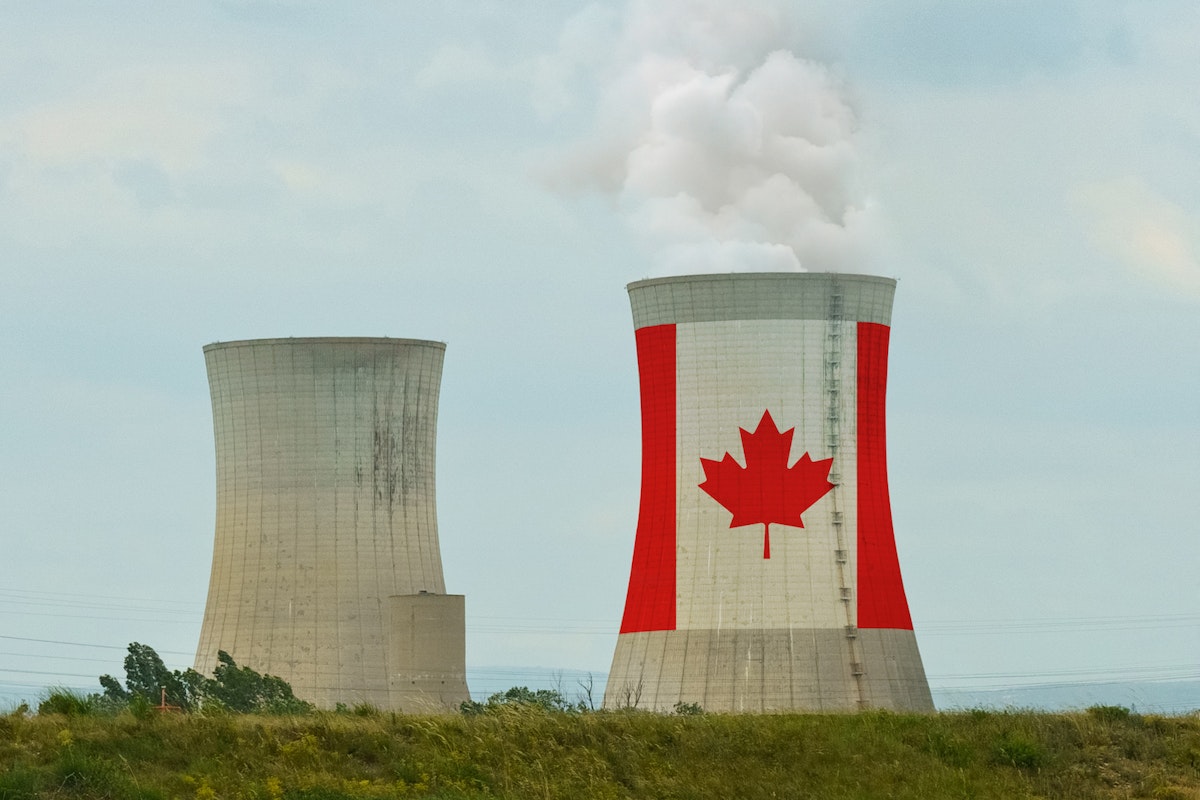The Nuclear Renaissance is Here
Or, at least, in Canada

-
-
Share
-
Share via Twitter -
Share via Facebook -
Share via Email
-
While U.S. nuclear industry struggles through licensing, financing, and fuel availability problems, Canada appears to be on the verge of a construction binge.
What’s different? Well, the physics are the same, of course, but the politics and the financial structure are a bit different.
In January this year, Ontario Power Generation said that it would build a BWRX-300, the small modular reactor version of GE-Hitachi’s boiling water reactor. In early July, it had an update. It will build not one, but four of them at Darlington, where it already operates native CANDU models. It may be the launch customer for that model, with the Tennessee Valley Authority watching closely and hoping to follow.
Canada may also turn out to be a source of small modular reactor exports. GE-H has enlisted the Canadian branch of another U.S. company, BWXT, to fabricate key components of the BWRX in Canada for export to Poland.
Ontario may have company. In June 2022, SaskPower, the provincial utility of Saskatchewan, began a “comprehensive evaluation” of building the same model there. That province, along with Alberta, New Brunswick, Prince Edward Island, Saskatchewan, and the Yukon Territory, along with the Canadian federal government, have now all signed on to an “SMR Action Plan.”
Back in Ontario, at another cluster of reactors in Bruce Township on Lake Huron, Bruce Power is considering building up to 4,800 megawatts of new generation. (The number suggests that these are conventional large reactors, not small modular reactors.)
And in Atlantic Canada, New Brunswick Electric has begun the environmental planning work to build a small sodium-cooled fast reactor that could in part run on the spent fuel of other reactors, perhaps including the adjacent CANDU that NB Electric opened in 1983 at Point Lepreau. The North Shore Mi’kmaq Tribal Council, a consortium of seven indigenous tribes, will invest in the companies building that reactor.
All of this is an interesting turn-around for Canada, which developed its own technology for building reactors, the CanDu (a word-play on the phrase “can do” that is meant to stand for Canadian Deuterium Uranium). It started work in the late 1950s and the first commercial deployment was in 1971; CANDUs have been exported to Argentina, China, India, Pakistan, South Korea, and Romania. Although Canada was proud of launching a reactor powered by its own native technology, it was a work-around; the CANDU does not require enriched uranium or a big reactor vessel, two things that Canada could not produce in the middle years of the last century. Canada is still seeking to sustain its CANDU industry; it recently announced $3 billion in export financing to help Romania finish two partly-built CANDU units at Cernavoda.
But now Canada seems to see its role as being a pioneer in the products of a global industry, with a strong emphasis on North America.
In fact, John Gorman, president of the Canadian Nuclear Association, the Canadian industry’s trade group, predicts that a “continental nuclear eco-system” will soon emerge.
In a sense, the nuclear industries of the United States and Canada have already merged. When Westinghouse came out of bankruptcy, Brookfield Business Partners took control. Brookfield is still the majority owner, and the rest is owned by Cameco, the big Canadian uranium mining company.
The U.S. and Canadian industries are regulated separately, but now with some cooperation between the Nuclear Regulatory Commission and the Canadian Nuclear Safety Commission. Five years ago the two agencies signed a Memorandum of Understanding in which they promised to use “best efforts” to coordinate, answering requests from each other on plant designs, siting, construction, operation and decommissioning of plants, incident and accident reports, handling of radwaste, transport and packaging, and other areas. They also agreed to facilitate personnel visits.
Terrestrial Energy, which is located near Toronto but has subsidiaries in Charlotte, NC, and Cambridgeshire, in the United Kingdom, said last year that the CNSC and the NRC had completed a joint technical review of the company’s Integral Molten Salt Reactor (IMSR). The chief executive officer of Terrestrial, Simon Irish, called it “a joint examination of the fundamentals of IMSR safety. The developers’ hope is to take the extensive work they do to get a license in one jurisdiction, and re-use at least some of it in another. Nuclear regulators, however, are far less integrated than the government agencies that regulate other high-tech products, like airliners, and seem likely to remain so, at least for the near future.
Several other reactor developers are simultaneously seeking regulatory approval on both sides of the border.
In Canada, as in the rest of the world, more projects are announced than actually get built. And the United States isn’t totally out of the race. There are at least three projects that seem likely to move forward stateside: the Carbon-Free Power Project, a cluster of small PWRs that will be designed by NuScale Power and owned by Utah Associated Municipal Power Systems, in Idaho; Natrium, a fast reactor with thermal storage to be built by TerraPower and GE-Hitachi that will replace a coal-fired plant owned by PacifiCorp, in Kemmerer, Wyoming; and X-Energy’s Xe-100, to be owned by Dow and installed at a chemical plant in Texas, on the shores of the Gulf of Mexico.
But proportionally, Canada may be more ambitious, and it has some real advantages in crossing the finish line. One is that it has strong provincial utilities that are sensitive to the policy priorities of the governments in the areas they serve. That is important in allowing technological innovation in nuclear energy and stands in contrast to the imperatives of investor-owned utilities in the United States. In the U.S. model, a company that is first to deploy a new model of airliner or car or electronics technology may gain what the economists call “first mover advantage.” But an investor-owned company that is the first to deploy a new kind of reactor risks running into delays and cost over-runs; going second is more prudent, from a commercial standpoint.
If a utility’s priorities extend beyond return on investment, into areas like meeting governmental electrification goals or environmental protection targets, it may be more hospitable to new technologies. And Canada has many more isolated settlements than the United States does; it may see a bigger benefit from reactors that generate just a few megawatts of electricity and heat than the United States ever will. In much of the United States, small reactors would compete against highly evolved generators running on cheap natural gas; in isolated places, the competition is diesel, which is dirtier, more expensive, and less secure.
And the Canada public may be more tuned into climate change lately. It’s had extensive wildfires, and whether those were caused by climate change or not, images (and smells) of one’s country going up in flames may be motivating.
Watching Canada be the first to deploy some new kinds of reactors might irk an American observer. But it should not be viewed as a problem for the United States. The country could be viewed as a policy laboratory for the rest of the world, determining the optimum path forward. The United States may have outsourced the “first mover” problem, at least for some models. Canada, with higher per-capita energy needs including more extreme heating needs, could especially demonstrate district heating, meaning using the lower-temperature heat left over after steam leaves the electricity-generating system, for space heating and domestic hot water.
